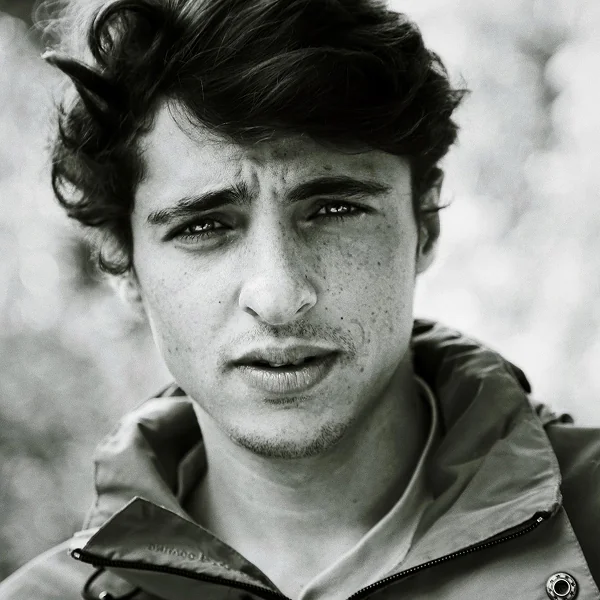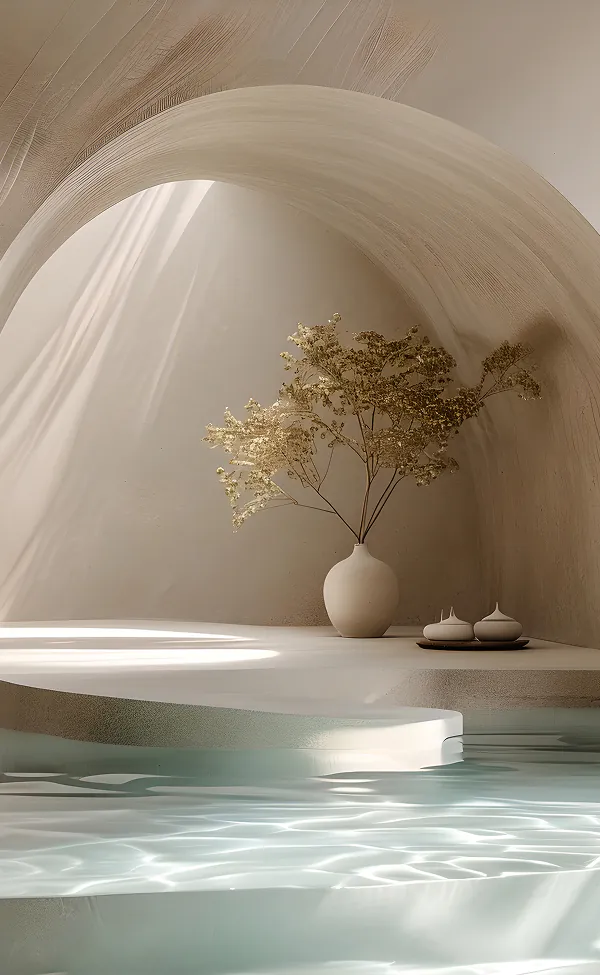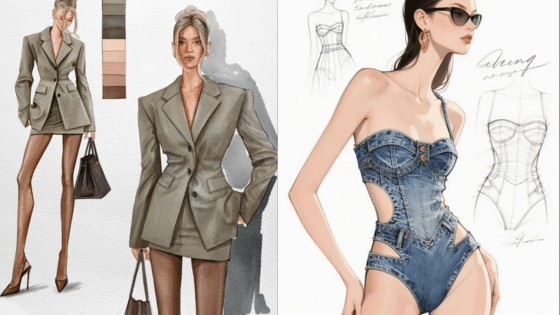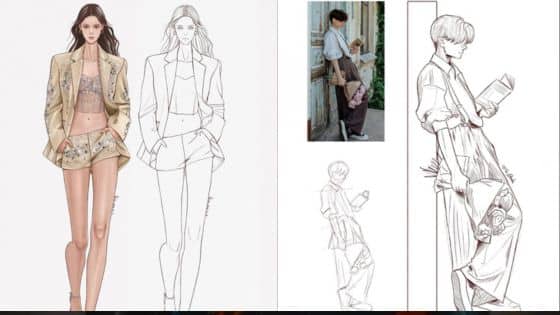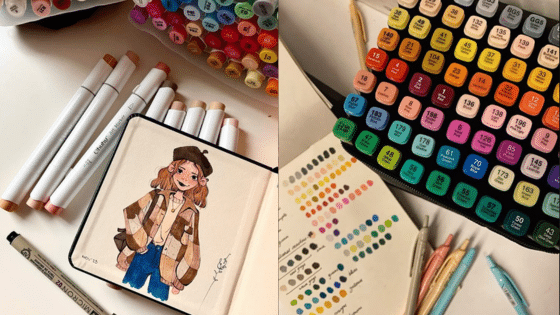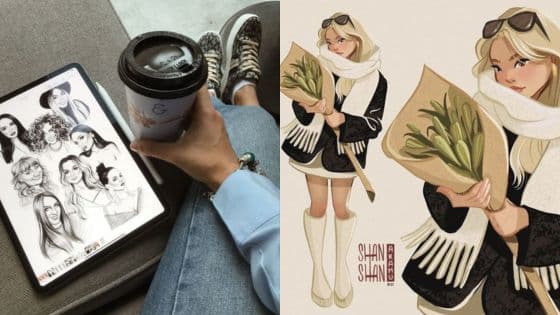Cartoon characters have long fascinated audiences of all ages, from classic animations to modern favorites. Many artists and enthusiasts seek to capture the charm of these figures through their drawings. This article explores ten popular cartoon characters that aspiring artists can learn to draw, providing guidance and inspiration along the way.
Learning to draw cartoon characters offers a wonderful opportunity to enhance artistic skills while having fun. By practicing with recognizable figures, individuals can develop their unique styles and techniques. Each character presents a distinct set of features and characteristics that can help in honing one’s drawing ability.
1) Bugs Bunny
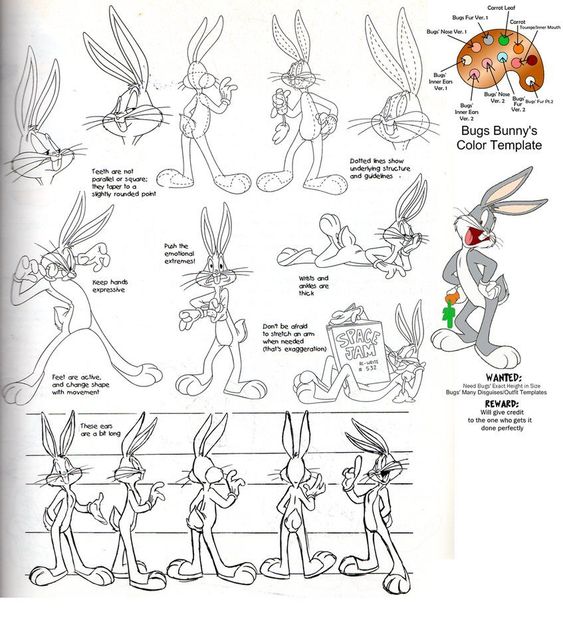
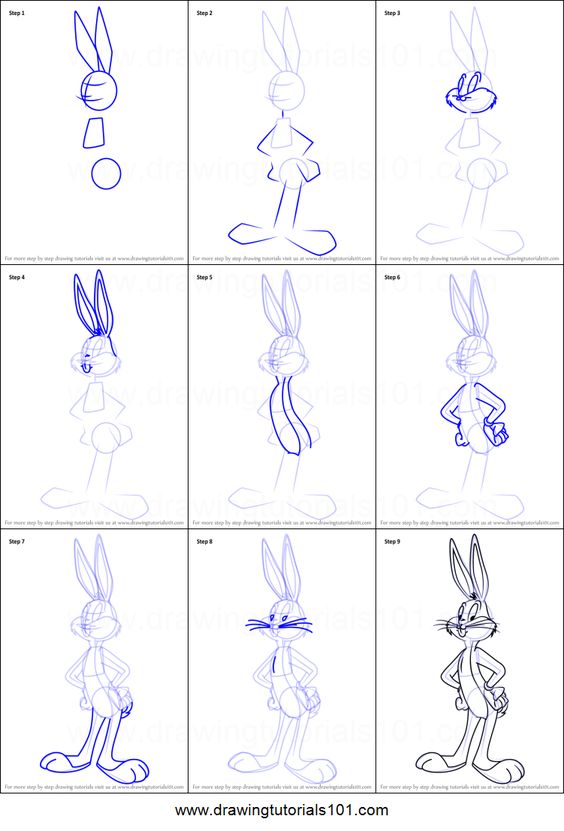
Bugs Bunny is a classic cartoon character created by Warner Bros. He first appeared in the 1940 cartoon “A Wild Hare.” Since then, he has become an iconic figure in animation.
Known for his laid-back attitude and clever wit, Bugs is often seen outsmarting his foes. His catchphrase, “What’s up, Doc?” highlights his casual demeanor.
Bugs Bunny’s design features long ears, a gray and white color palette, and a memorable smile. Artists appreciate the character’s expressive features, which allow for a range of emotions.
Drawing Bugs requires attention to his distinctive proportions and facial expressions. Observing his poses in various cartoons can aid in capturing his personality.
In addition to his cartoon appearances, Bugs has starred in feature films and video games. He remains a beloved character, representing the golden age of animation.
2) Mickey Mouse
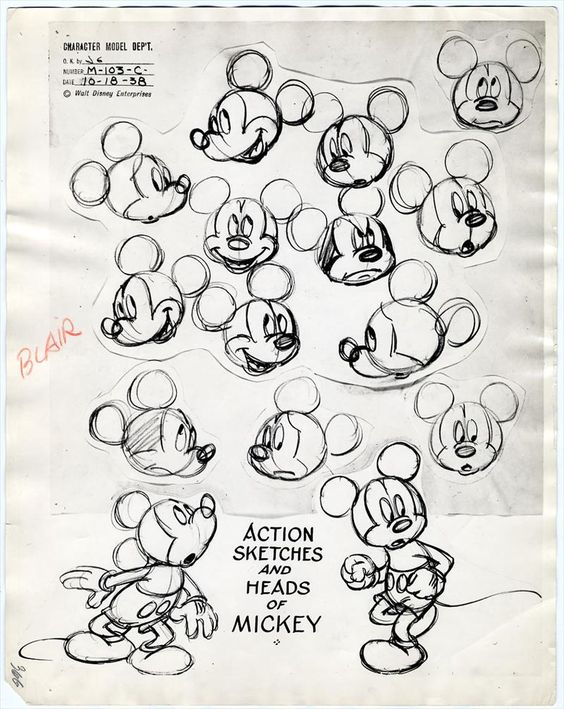
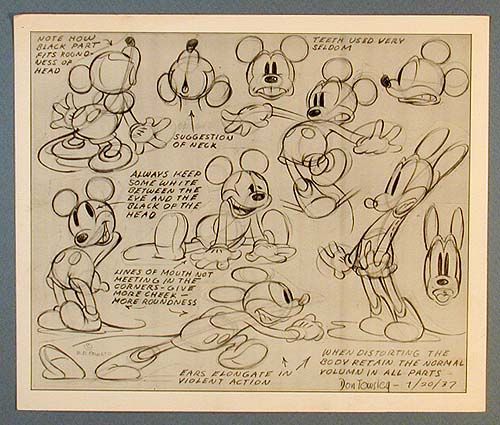
Mickey Mouse is an iconic cartoon character created by Walt Disney and Ub Iwerks. He first appeared in the animated short film “Steamboat Willie” in 1928.
Mickey’s design features large circular ears, a thin body, and a cheerful face. His simple yet distinct appearance makes him recognizable worldwide.
As a character, Mickey embodies an optimistic personality, often depicted as adventurous and playful. He has starred in numerous films, television shows, and comics.
Mickey Mouse is often considered the mascot of The Walt Disney Company. His influence on popular culture is profound, marking the beginning of the Disney legacy.
Artists can find drawing Mickey Mouse approachable due to his geometric shapes. This simplicity allows for creativity while maintaining the character’s essence.
3) SpongeBob SquarePants
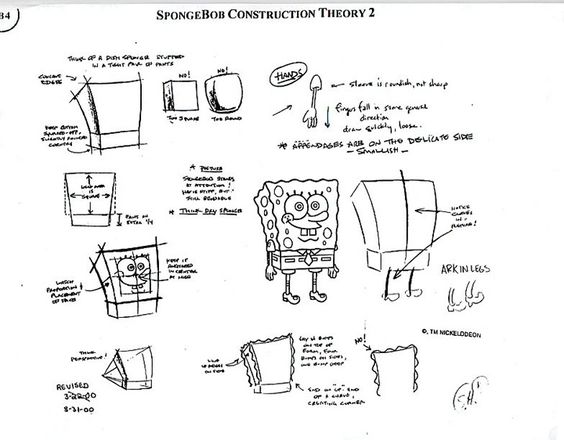
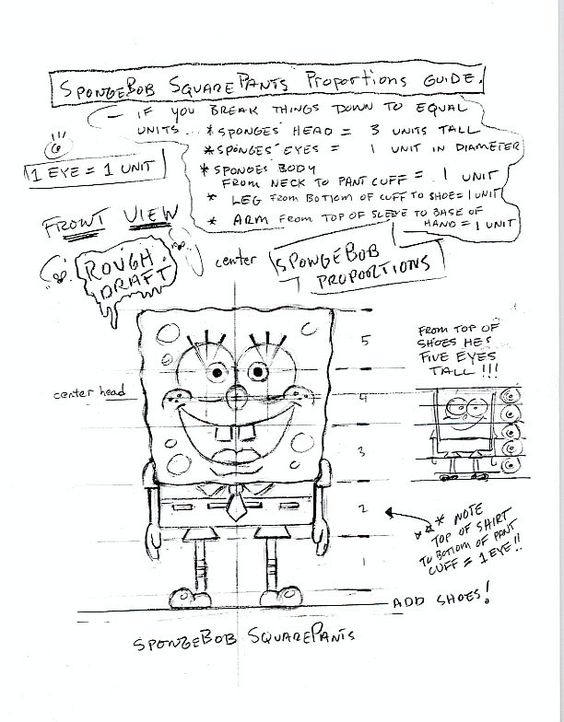
SpongeBob SquarePants is a popular animated character created by Stephen Hillenburg. He first appeared on television in 1999 and quickly gained a following.
SpongeBob is known for his cheerful demeanor, distinctive square shape, and bright yellow color. He lives in a pineapple under the sea and works as a fry cook at the Krusty Krab.
When drawing SpongeBob, focus on his iconic features. His large, expressive eyes and toothy grin are essential elements. The simple shapes that form his body make him approachable for artists.
Using a combination of straight and curved lines will help capture his playful essence. Pay attention to the details, such as his short legs and large shoes, which add to his character.
Incorporate elements from his underwater world, like jellyfish and bubbles, to enhance the drawing. These features create context and bring the character to life.
SpongeBob’s universal appeal and relatable personality contribute to his ongoing popularity in various media. This makes him a great choice for artists at any skill level.
4) Scooby-Doo
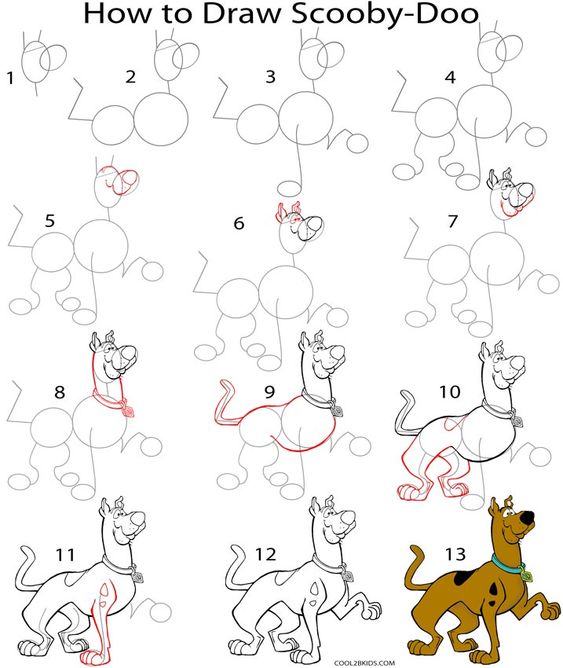
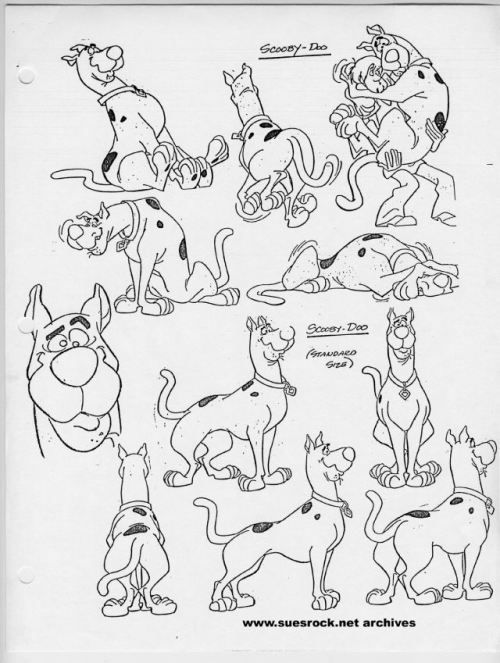
Scooby-Doo is a beloved animated character known for his unique design and personality. As a Great Dane, he features large ears, a distinctive snout, and a playful demeanor. His friendly expression and goofy antics contribute to his charm.
Created by Joe Ruby and Ken Spears, Scooby-Doo first appeared in 1969. The character quickly became a staple of children’s television. Scooby-Doo engages in adventures with his human friends, solving mysteries involving ghosts and monsters.
When drawing Scooby-Doo, it’s important to capture his expressive eyes and floppy ears. His iconic collar with a dog tag adds a recognizable touch. Emphasizing his clumsy, lovable nature can bring the character to life on the page.
Artists can experiment with different poses, showcasing Scooby-Doo’s playful side. His interactions with other characters, like Shaggy, often highlight his humorous and loyal personality. This adds depth to the illustrations and makes them relatable for fans.
5) Bart Simpson
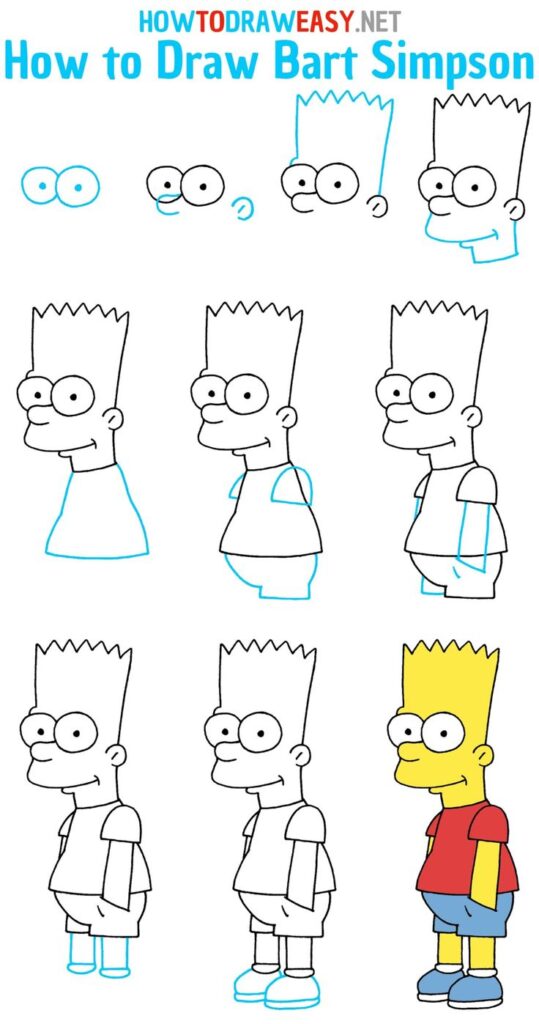
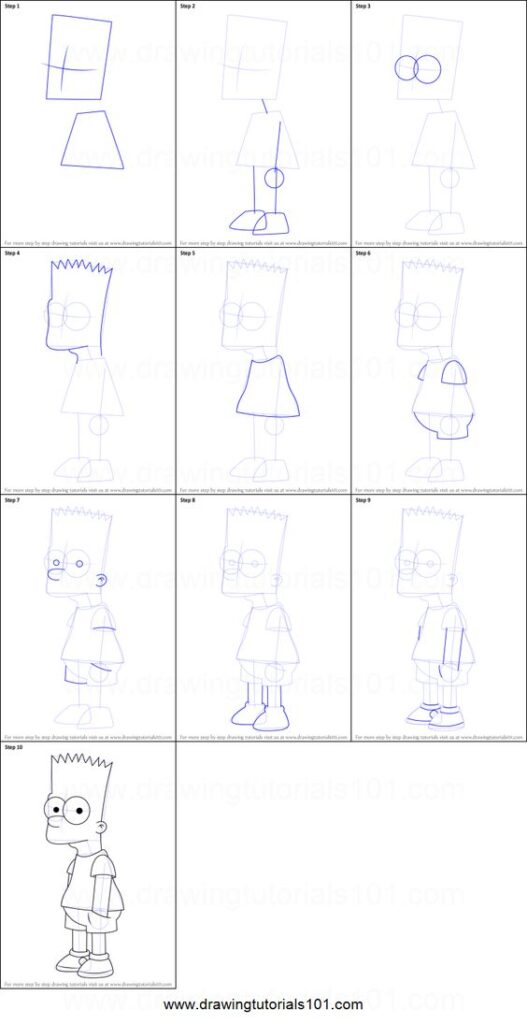
Bart Simpson is one of the most recognizable characters from the animated series “The Simpsons.” He is known for his mischievous behavior and rebellious spirit. His iconic look includes spiky yellow hair, a red t-shirt, and blue shorts.
When drawing Bart, focus on his distinctive facial features. His wide grin and expressive eyes are essential to capturing his personality. Pay attention to the proportions of his head in relation to his body, which contributes to his cartoonish appeal.
Bart’s pose often reflects his adventurous nature. Common poses include skateboarding, pulling pranks, or simply lounging on a couch. These positions showcase his laid-back attitude and energetic character.
To achieve a dynamic drawing of Bart, use bold lines and vibrant colors. The yellow skin tone is a signature aspect, along with the contrasting shades of his clothing. Simple shapes can help maintain the cartoon style, emphasizing his youth and mischief.
6) Fred Flintstone
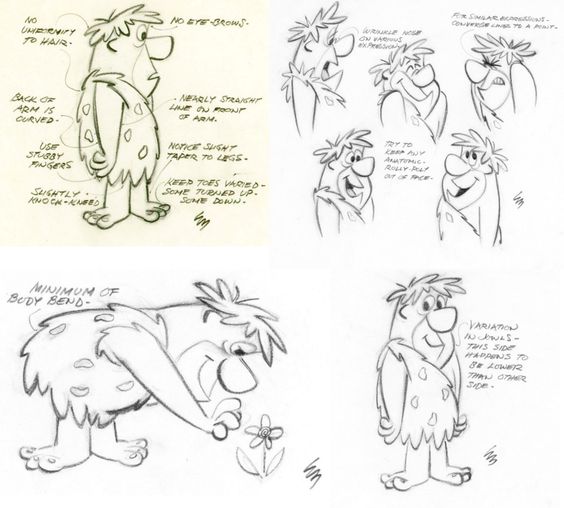
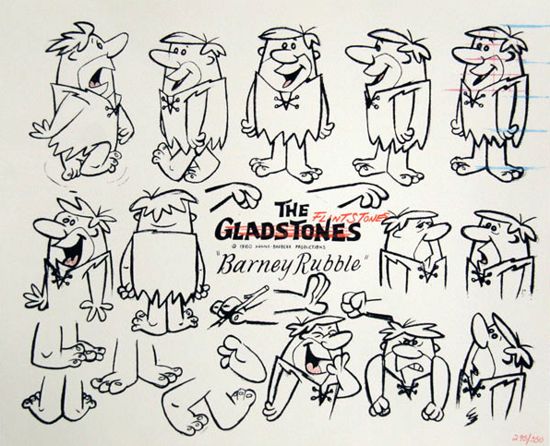
Fred Flintstone is a well-known cartoon character from the animated television series “The Flintstones.” Created by William Hanna and Joseph Barbera, the show debuted in 1960. Fred is characterized as the lovable, bumbling husband and father living in the prehistoric town of Bedrock.
He typically wears a brown tunic and a blueish tie. His signature caveman hairstyle consists of a flat top with a slight wave. Fred’s personality combines determination with a good dose of clumsiness, making him relatable to many viewers.
Fred often finds himself in humorous situations due to his antics. He is known for his catchphrase, “Yabba-Dabba-Doo!” which reflects his playful spirit. Fred’s relationship with his wife, Wilma, and his best friend, Barney Rubble, adds depth to his character.
Drawing Fred involves capturing his distinctive features and playful demeanor. Focusing on his facial expressions can bring energy to sketches. His stance often conveys a sense of confidence, making him an engaging subject for artists.
7) Popeye
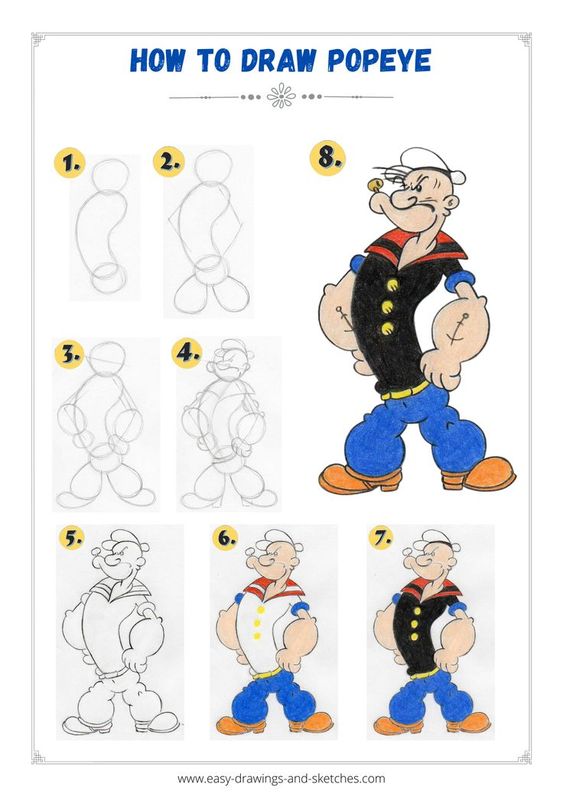
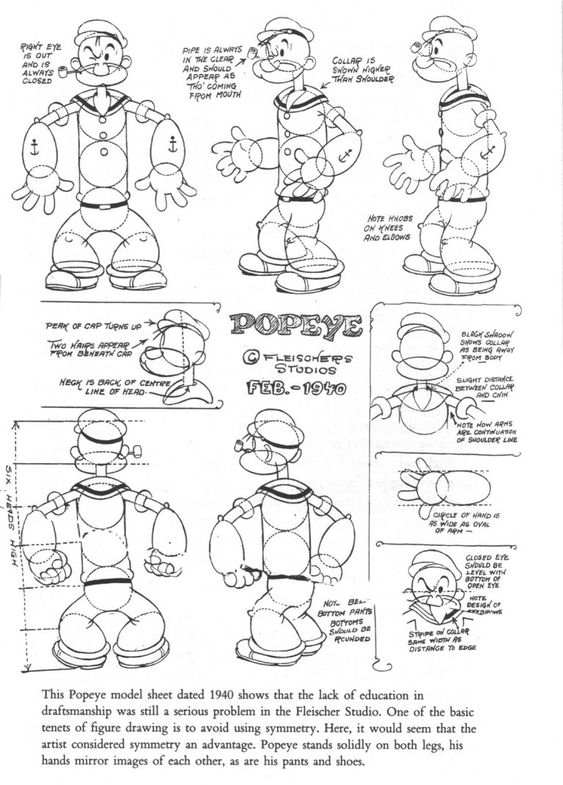
Popeye is a beloved cartoon character known for his iconic sailor appearance and unique personality. Created by Elzie Crisler Segar, he first appeared in the comic strip “Thimble Theatre” in 1929.
His trademark look includes a squinting eye, a prominent chin, and pipe in his mouth. He often wears a sailor suit, complete with a navy cap and anchor tattoos on his forearms.
Popeye’s character is defined by his love for spinach, which gives him superhuman strength. This theme highlights the positive aspects of healthy eating.
Popeye’s adventures often revolve around his relationships with Olive Oyl and Bluto. These dynamics create humorous situations filled with action and comedic rivalry.
Throughout the years, Popeye has appeared in numerous animated films and television shows, becoming an enduring symbol of resilience and determination. His charm and simple wisdom continue to resonate with audiences of all ages.
8) Betty Boop
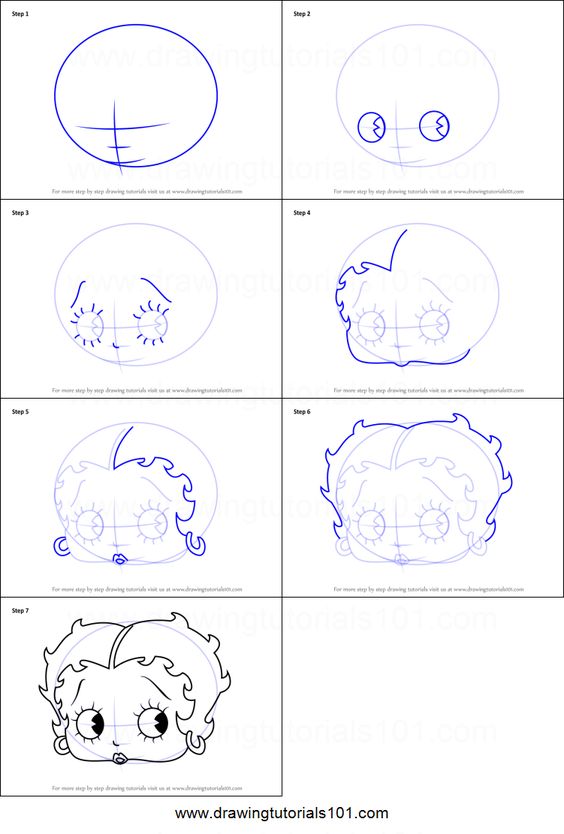
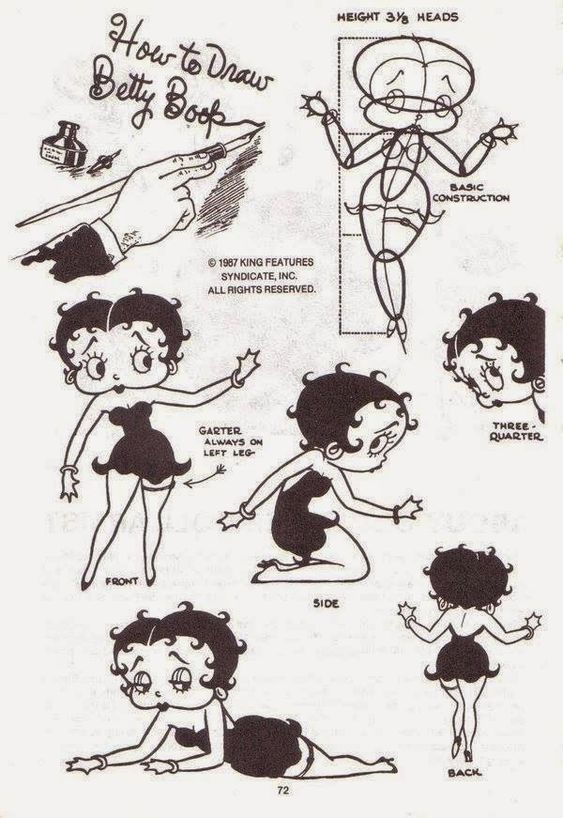
Betty Boop is an iconic cartoon character created by Max Fleischer. She made her debut in the 1930 animated short “Dizzy Dishes.”
Her design features large eyes, a short bob hairstyle, and a flapper dress, reflecting the trends of the Jazz Age. Betty is known for her playful personality and is often portrayed as a symbol of the Roaring Twenties.
The character became famous for her signature phrase, “Boop-Oop-a-Doop!” which encapsulated her fun-loving spirit. Betty Boop’s influence extends beyond animation; she has become a cultural icon and a subject of various art forms.
She was one of the first female characters in animation to take on a lead role, making her a pioneer for women in media. Betty’s bold character and unique style continue to resonate with audiences today.
9) Tom (from Tom and Jerry)
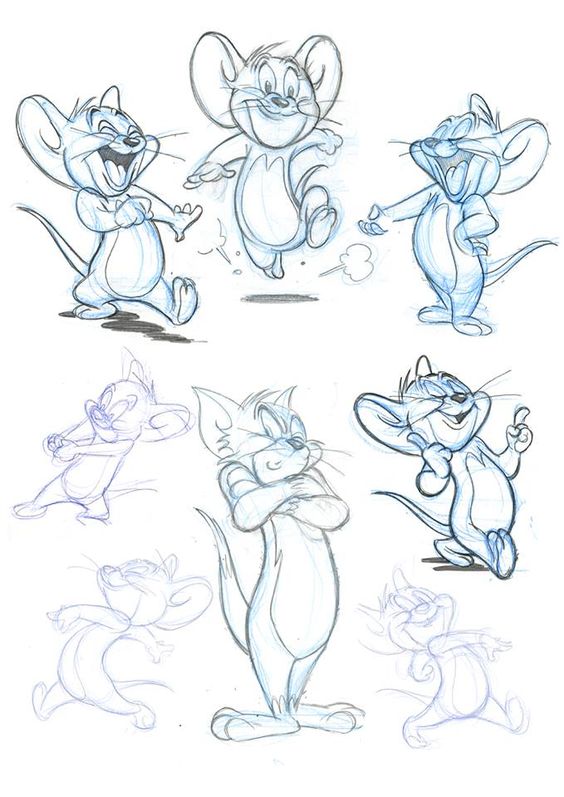
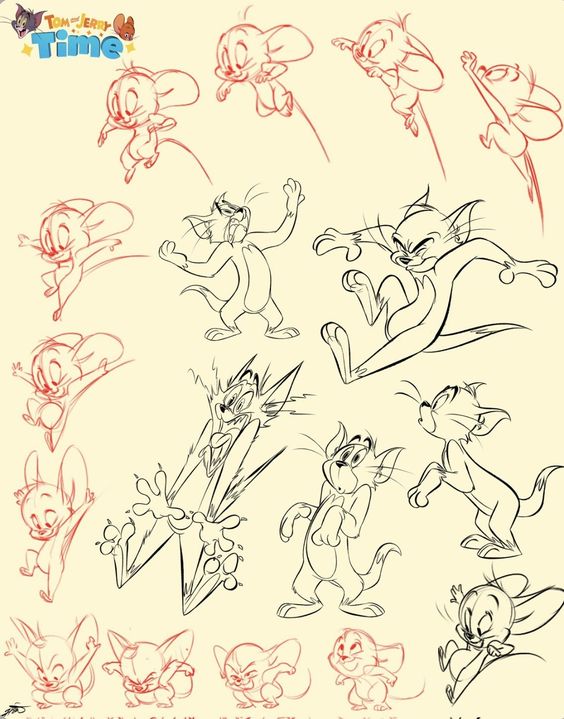
Tom is a classic animated character from the series “Tom and Jerry,” created by William Hanna and Joseph Barbera. He is depicted as a blue-gray domestic cat who endlessly chases the clever mouse, Jerry.
Known for his expressive features, Tom’s design includes large ears, a rounded body, and a distinctive facial expression that conveys a range of emotions. His character often blends humor with frustration as he tries to catch Jerry but fails repeatedly.
In terms of drawing Tom, focus on his simple shapes and dynamic poses. Capturing his movement is key, as he often exhibits exaggerated actions when pursuing Jerry.
Tom’s character showcases a blend of slyness and determination. He can be both a comical villain and a sympathetic figure, adding depth to his role in the series.
Artists can experiment with various styles, from classic animation to more modern interpretations. Attention to detail, especially in his eyes and facial expressions, can enhance the portrayal of his character’s personality.
10) Jerry (from Tom and Jerry)
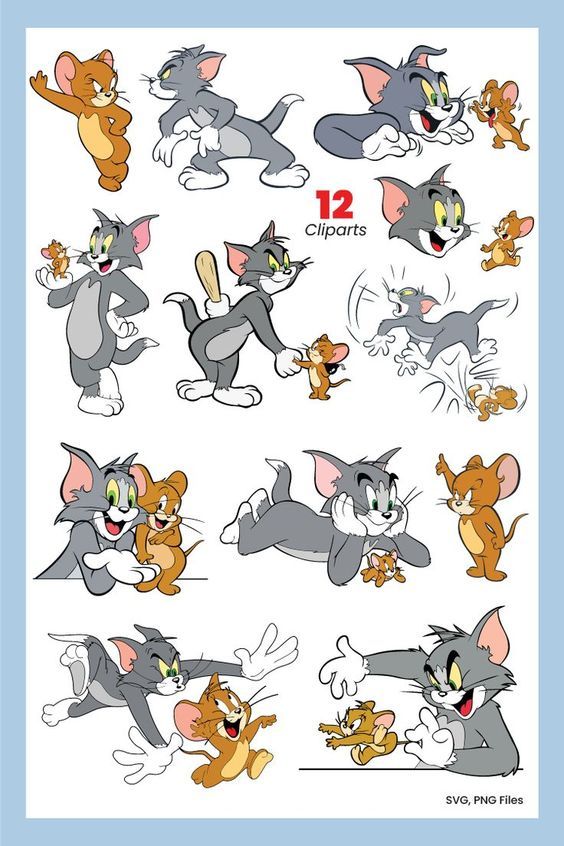
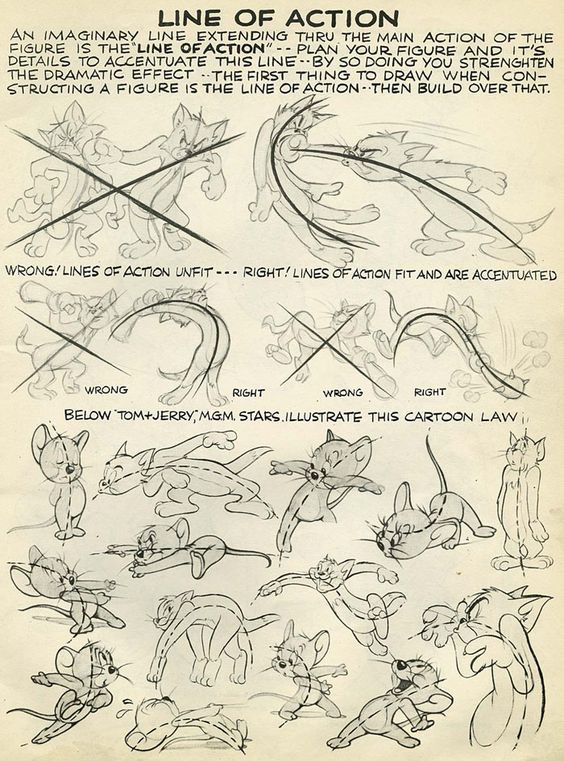
Jerry is a classic character from the beloved animated series “Tom and Jerry.” He is depicted as a clever and resourceful mouse who often outsmarts Tom, the cat.
His design features large expressive eyes, a simple round body, and a distinctively small nose. These traits make him instantly recognizable to audiences.
When drawing Jerry, focus on his round features and playful posture. His facial expressions are key to conveying his mischievous personality. Highlighting his quick movements can enhance the sense of his cunning nature.
His relationships with other characters often showcase his wit and charm. Jerry displays a wide range of emotions, from confidence to surprise, which adds depth to his character.
Using a variety of poses can help capture Jerry’s adventurous spirit. Whether he is sneaking around or celebrating a small victory, each pose tells a part of his story.
Incorporating vibrant colors can further bring Jerry to life. His light brown fur contrasts nicely with backgrounds, emphasizing his animated movements.
Basic Techniques for Drawing Cartoon Characters


Drawing cartoon characters requires a solid foundation in certain techniques. Understanding proportions, using basic shapes, and adding details are key to creating appealing designs.
Understanding Proportions
Proportions are critical when drawing cartoon characters. Characters often have exaggerated features, which can include oversized heads and small bodies.
A common approach is the “head as a unit” method. For example, if the character’s head is about one-third of the total height, the body will follow suit.
Using simple measurements helps maintain consistency across character designs. For instance, ensuring that the eyes sit below the halfway mark of the head creates a natural look. This foundational knowledge allows for more creative freedom while keeping designs coherent.
Drawing Basic Shapes
Most cartoon characters can be broken down into basic geometric shapes. This method simplifies the drawing process and makes it easier to achieve correct proportions.
Start with circles for heads and ovals for bodies. Use rectangles and triangles for limbs and accessories.
Rough sketches help establish the overall pose. For instance, a character with a large circular head and triangular body projects playfulness, while a rectangular head with a tapered bottom conveys seriousness.
Using shapes as building blocks helps artists focus on form before adding intricate details.
Adding Details
Once the basic shapes are in place, details bring the character to life. Facial features such as eyes, mouths, and expressions significantly affect personality.
Eye shape can drastically change a character’s emotion. For example, large, round eyes might convey innocence, while narrow, slanted eyes can suggest mischief.
Clothing and accessories also define a character’s identity. They can symbolize traits like heroism or quirky personality.
Adding texture and small details like wrinkles, shadows, or highlights provides depth. It enhances the character’s visual appeal without overwhelming the overall design.
Common Mistakes to Avoid
When drawing cartoon characters, certain missteps commonly occur. Avoiding these mistakes can significantly enhance the quality of the artwork. Attention to detail in proportions, simplicity, and character consistency will lead to better results.
Incorrect Proportions
Many artists struggle with getting proportions right. Cartoon characters often have exaggerated features, but this does not mean that proportions can be neglected entirely.
For instance, if the head is too large or small compared to the body, the character may look unbalanced. It is useful to study the character’s reference images to identify appropriate proportions.
Using a grid or guidelines can help maintain these proportions. Consider creating rough sketches to establish how various body parts relate in size. This preparatory work can save time in the final drawing.
Overcomplicating the Drawing
Simplicity is key in cartoon art. New artists sometimes add unnecessary details that can detract from the character’s charm.
Instead of focusing on intricate backgrounds or excessive features like detailed clothing, simplify the design. Stick to essential elements that capture the character’s personality.
Identify the main shapes that construct the character, and use basic lines to outline them. This approach prioritizes clarity and allows the viewer to understand the character quickly.
Ignoring Character Consistency
Character consistency is crucial for storytelling and recognition. Occasionally, artists might change a character’s appearance between drawings unintentionally.
To maintain consistency, create a character sheet that includes key features like colors, shapes, and expressions. This reference will keep the character looking cohesive across various situations.
Regular practice with the character also helps in internalizing its design. Avoid altering core aspects unless the change serves a purpose in the narrative. Consistent character design strengthens the viewer’s connection and reinforces the character’s identity.
- 1.6Kshares
- Facebook0
- Pinterest1.6K
- Twitter0
- Reddit0
